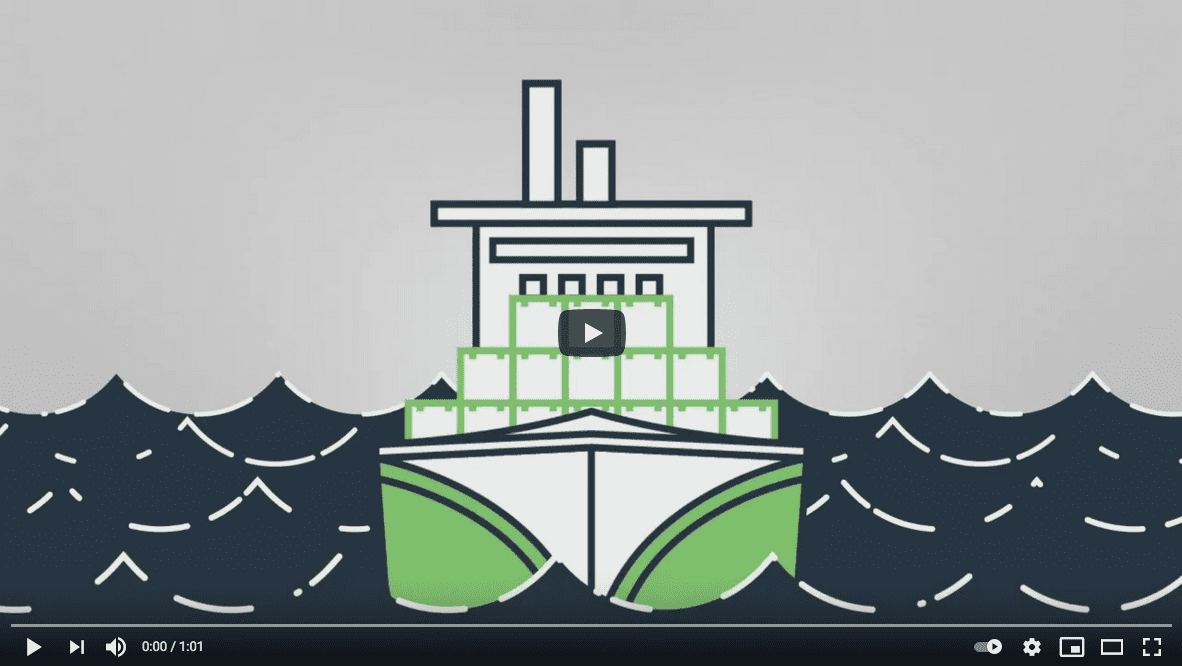Marine Fuel Cell Energy Solutions
Bloom has entered the marine transport market to help accelerate the industry toward a more sustainable future through the design and development of fuel cell powered ships
Marine Energy Solutions: The Challenge of Decarbonizing Marine Transport
The marine sector includes over 50,000 merchant ships and accounts for nearly 80% of world trade. Many of these ships still use carbon-rich fuels such as bunker fuel, diesel, and other hydrocarbons.
Despite estimated efficiency improvements of 40% by 2050, CO2 emissions in the sector are still expected to increase by 50%-250% in that same timeframe. Meanwhile, IMO targets outline carbon intensity reductions of 40% by 2030, 70% by 2050, and zero emissions before 2100. As a significant source of global pollution, it’s critical for the sector to identify flexible and scalable marine energy solutions to support decarbonization now and in the future.
The Bloom Energy Approach to Marine:
Fuel Cell Powered Ships
Bloom’s marine fuel cell platform is ready for the future of fuel, today.
The marine transport industry is under pressure to find cleaner sources of power. Bloom’s platform is well positioned to address impending emissions regulations and offer higher efficiencies than traditional power sources. Marine fuel cell powered ships can obtain immediate emissions reductions for the cleanest and most efficient operation by utilizing liquefied natural gas (LNG) as the primary fuel source.
As global infrastructure for hydrogen and other emission-free fuels continue to develop, Bloom’s modular, fuel-flexible, and upgradeable platform helps to avoid the issue of stranded assets, granting the sector long-term flexibility and scalability for improved, future-proof, ship design.
FUEL-FLEXIBILITY

HIGH-EFFICIENCY

FUTURE-PROOF
From Land to Sea: Turning Fuel Cells into Marine Energy Solutions
A key innovation driver is re-engineering a stable terrestrial-based technology for the variabilities of a marine environment. Ships and their onboard equipment must withstand and continue to operate effectively and safely with the constant motion of the ship and, at times, turbulent seas. This includes ruggedization of our microgrid technology to support marine classification requirements like tilt, roll, pitch, vibration, and safety.
Full Steam Ahead on Marine Fuel Cells
Bloom’s future-proof platform is IMO 2040- and 2050-ready today, with the ability to operate on LNG, biogas, and blended hydrogen (50%), while offering low or no risk of stranded assets. In the future, Bloom’s platform can capture carbon or utilize green hydrogen to achieve zero carbon emissions. Bloom’s marine energy platform can also be configured as an electrolyzer, converting water into hydrogen with high efficiency. In a decarbonized world, hydrogen demand could grow 10-fold by 2050 and offer the marine sector a way to meet or exceed emissions standards.
